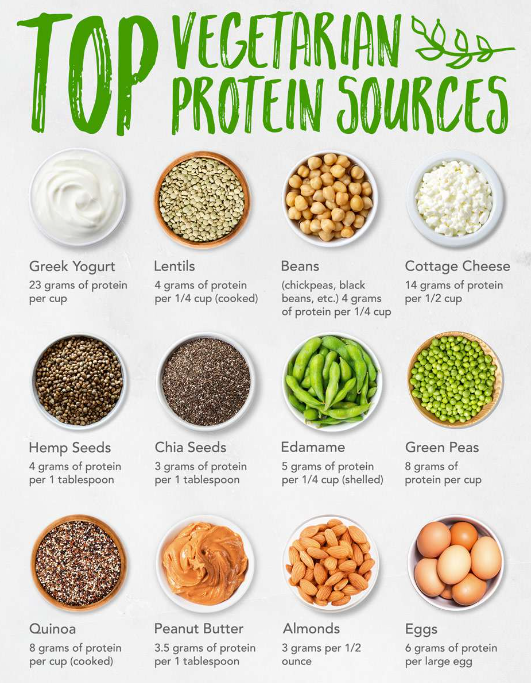BOURSESSENEGAL – When it comes to nutrition, few topics spark as much debate as protein. Understanding the best sources of protein can significantly impact your overall health, energy levels, and fitness goals. Whether you’re an athlete, a busy professional, or someone just looking to eat healthier, choosing the right protein sources is essential. In this comprehensive guide, we’ll explore various high-quality protein sources, their benefits, and tips for incorporating them into your diet.
Why is Protein Important?
Protein plays a crucial role in building and repairing tissues, producing enzymes and hormones, and supporting immune function. Additionally, it provides your body with the energy needed for daily activities. Without adequate protein, you might experience fatigue, muscle loss, and weakened immune response.
Benefits of Consuming Protein
- Muscle Growth and Repair: Protein helps repair muscle tissues after workouts, making it vital for recovery and growth.
- Weight Management: High-protein diets can enhance feelings of fullness, which may help reduce overall calorie intake.
- Metabolism Boost: The thermic effect of food (TEF) means your body burns more calories digesting protein compared to fats or carbohydrates.
Top Sources of Protein
Let’s dive into the best sources of protein, categorizing them into animal-based and plant-based options.
Animal-Based Protein Sources
1. Lean Meats
Lean meats like chicken, turkey, and lean cuts of beef are excellent protein sources. They provide essential amino acids required for muscle repair and growth.
- Chicken Breast: A favorite among fitness enthusiasts, chicken breast packs about 31 grams of protein per 100 grams and contains minimal fat.
- Turkey: Similar to chicken, turkey is high in protein and low in calories, making it a smart choice for those looking to maintain or lose weight.
2. Fish and Seafood
Fish and seafood are not just tasty; they’re packed with protein and other vital nutrients.
- Salmon: This fatty fish is rich in omega-3 fatty acids and offers about 25 grams of protein per 100 grams. Omega-3s are known for their heart health benefits.
- Tuna: With approximately 30 grams of protein per 100 grams, tuna is a powerhouse that also provides important minerals like selenium.
3. Dairy Products
Dairy products like milk, yogurt, and cheese are versatile protein sources.
- Greek Yogurt: This creamy delight contains about 10 grams of protein per 100 grams and is also a good source of probiotics.
- Cottage Cheese: Low in fat and high in protein, cottage cheese provides around 11 grams of protein per 100 grams, making it perfect for snacks or meals.
Plant-Based Protein Sources
1. Legumes
Legumes such as lentils, chickpeas, and black beans are not only high in protein but also packed with fiber.
- Lentils: Offering about 9 grams of protein per 100 grams, lentils are a fantastic choice for soups and salads.
- Chickpeas: Also known as garbanzo beans, chickpeas provide about 19 grams of protein per 100 grams, making them a popular ingredient in hummus.
2. Quinoa
Quinoa is a unique grain that contains all nine essential amino acids, making it a complete protein source. With about 4 grams of protein per 100 grams, quinoa is an excellent addition to salads and bowls.
3. Nuts and Seeds
Nuts and seeds are convenient snack options that offer healthy fats and protein.
- Almonds: These nutrient-dense snacks provide about 21 grams of protein per 100 grams. They’re also rich in vitamin E and magnesium.
- Chia Seeds: Packed with omega-3 fatty acids, chia seeds offer about 17 grams of protein per 100 grams, along with a good dose of fiber.
How to Incorporate Protein into Your Diet
Transitioning to a protein-rich diet doesn’t have to be daunting. Here are some practical tips to help you increase your protein intake:
Meal Planning
Start by planning your meals around your protein sources. This approach ensures you get adequate protein throughout the day.
- Breakfast: Consider a breakfast smoothie with Greek yogurt, fruits, and a scoop of protein powder.
- Lunch: Prepare a quinoa salad with chickpeas, spinach, and a drizzle of olive oil.
- Dinner: Grill some chicken or fish and serve it with a side of lentils and steamed vegetables.
Snacks
Incorporate protein-rich snacks between meals to keep your energy levels steady.
- Trail Mix: Create your own trail mix with nuts, seeds, and a sprinkle of dark chocolate.
- Protein Bars: Opt for low-sugar protein bars when you’re on the go.
Cooking Methods
Choose cooking methods that retain the nutritional quality of your food.
- Grilling or Baking: These methods enhance flavor without adding unnecessary fats.
- Steaming: Steaming vegetables preserves their nutrients while allowing for a healthy side dish.
Conclusion
Understanding the best sources of protein can empower you to make healthier food choices. By including a mix of animal-based and plant-based proteins in your diet, you’ll ensure that your body gets the essential nutrients it needs.
Incorporate these protein-rich foods into your daily routine, and you’ll not only boost your energy levels but also support your overall health. Remember, balance is key—strive for variety and moderation, and you’ll reap the rewards of a protein-rich diet. Whether you’re looking to build muscle, lose weight, or simply eat healthier, focusing on these protein sources can help you achieve your goals.
Take Action Today
Start planning your meals, experimenting with new recipes, and incorporating more protein into your diet. Your body will thank you!
REFERENCE : https://www.health.com/



